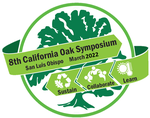#60

Assessing the Contribution of Oak Woodland Habitats to Biodiversity Conservation Using CWHR and ACE
Melanie Gogol-Prokurat, Biogeographic Data Branch, California Department of Fish and Wildlife
Ryan Hill, Biogeographic Data Branch, California Department of Fish and Wildlife
The California Wildlife Habitat Relationships (CWHR) program contains data on more than 350 vertebrate species and subspecies in California that use oak woodland habitats for reproduction, cover, or feeding. The CWHR database is freely available and can be queried to produce species lists that can be filtered by location, oak woodland type, tree structure and density, seasonality, special status, and other habitat elements. In addition to data on habitat use, the CWHR program maintains a spatial library of species ranges which are available for download from the California Department of Fish and Wildlife website. The species ranges have been brought together with the best available vegetation maps to develop habitat distribution models for each species, so users can understand which species may be found in particular oak woodlands, and what adjacent habitat types might also be used.
CDFW has developed a statewide conservation planning tool called Areas of Conservation Emphasis (ACE), which uses a standardized framework of landscape units to facilitate the integration of these multiple facets of conservation planning. ACE uses the best vegetation maps available for California, and includes a dedicated oak woodlands layer as part of the significant habitats module. Certain oak communities are also represented in the ACE rare vegetation layer. ACE brings together data on the distribution of habitats in the landscape and the expected occupancy of species within those habitats based on CWHR to map biodiversity across the state. Together, ACE and CWHR provide the most comprehensive set of locational data for oak woodlands across California, the species associated with these habitats, and information on the ecological relationships between them. Using the information on oak woodland biodiversity alongside complementary analyses of habitat connectivity and climate resilience, we conducted a spatially-explicit analysis to identify where oak woodland habitats can contribute to multiple conservation planning goals.
